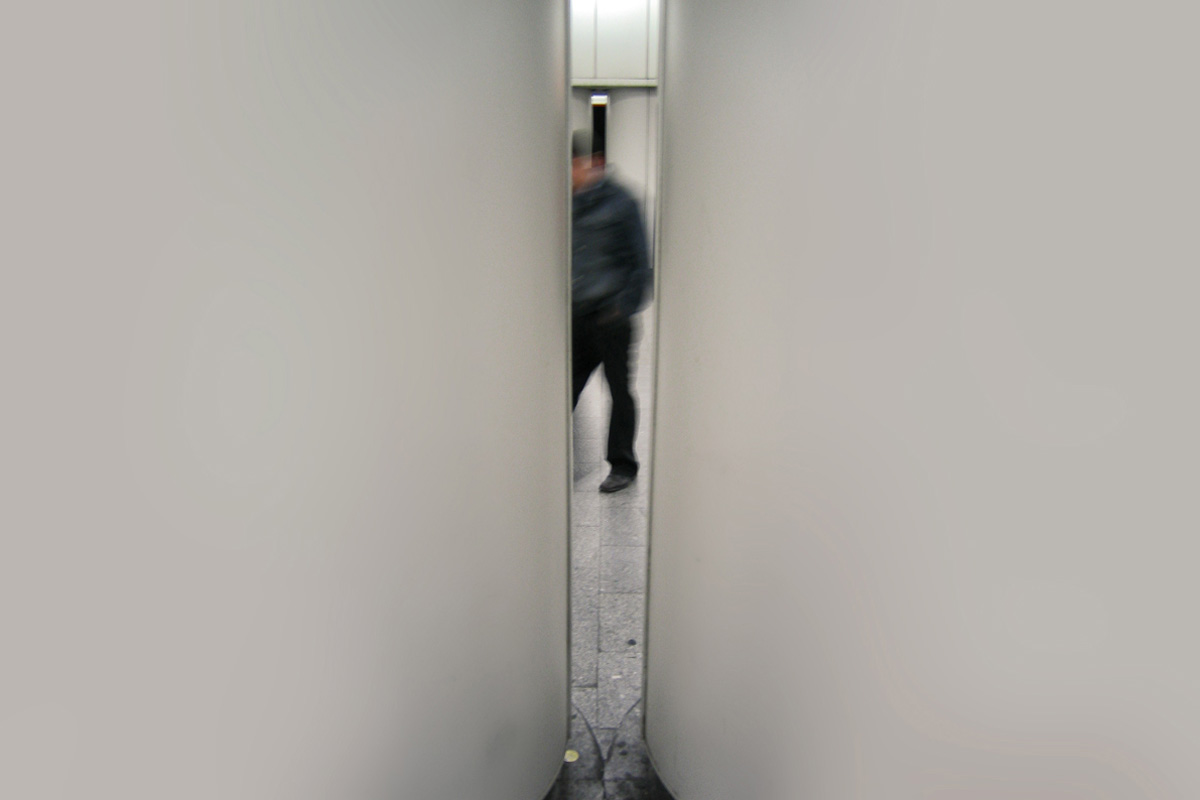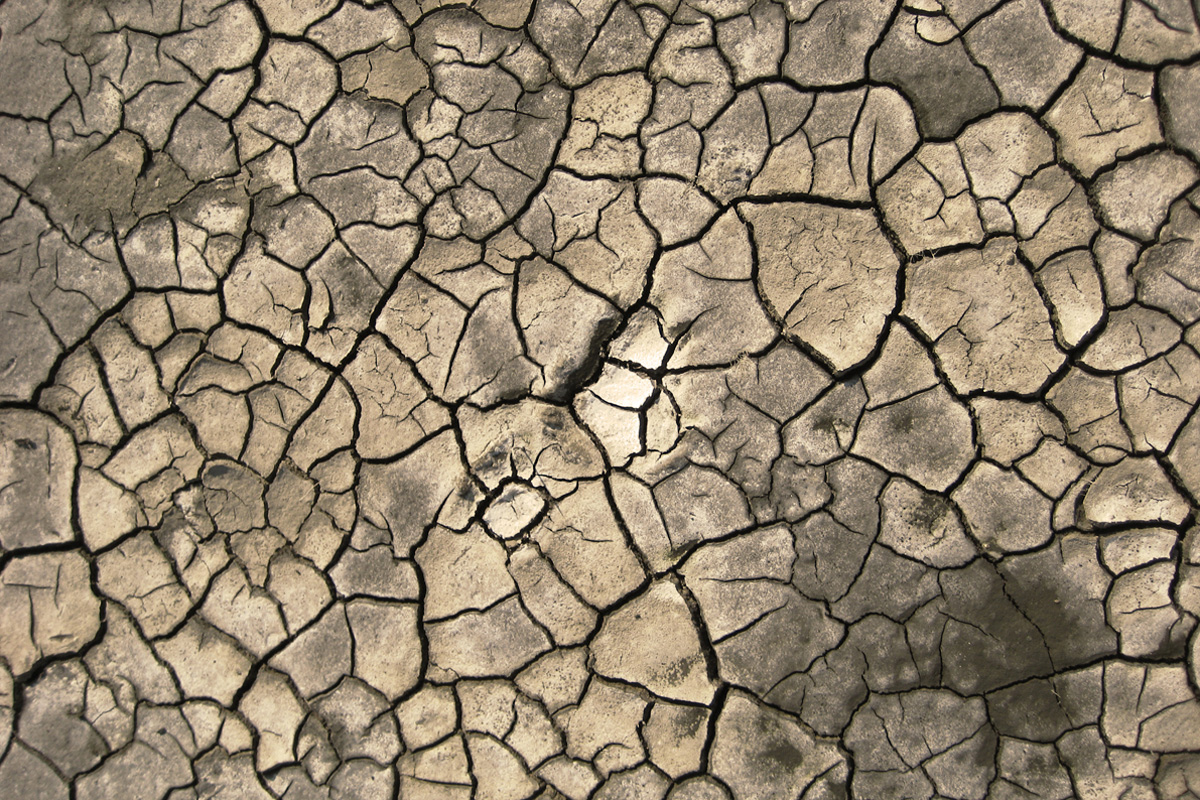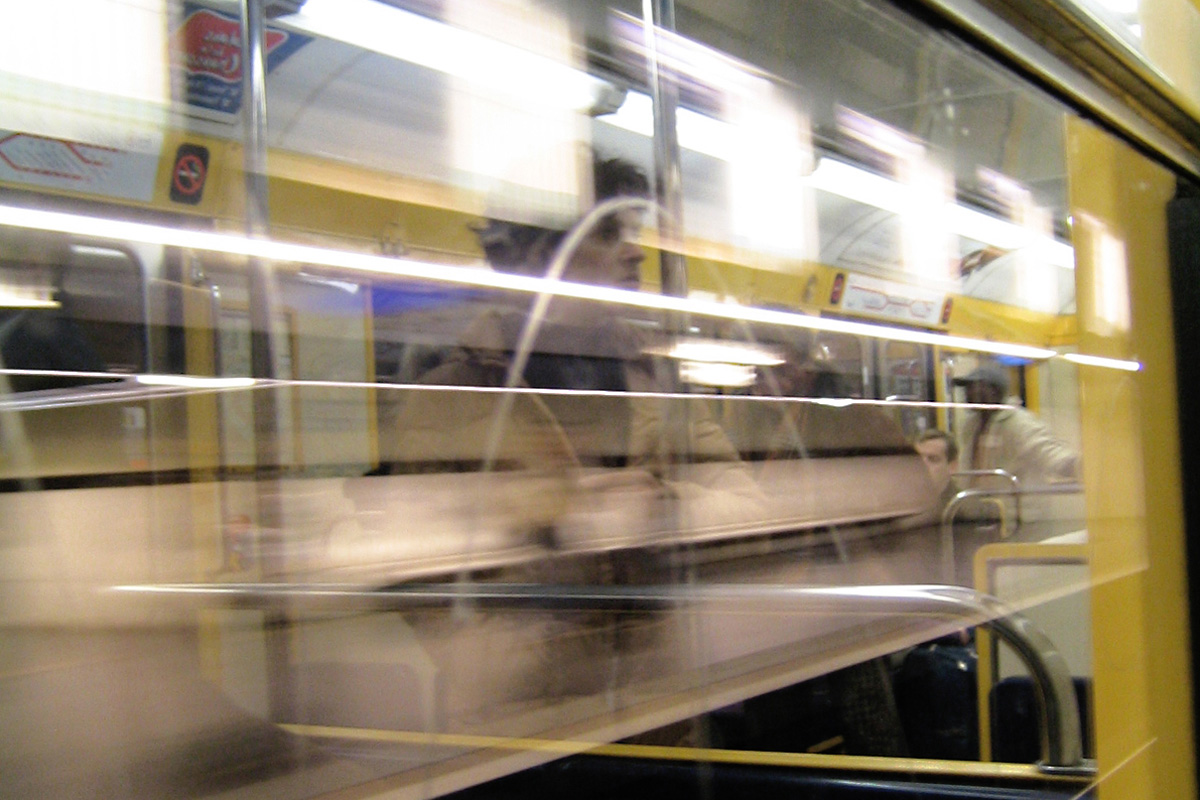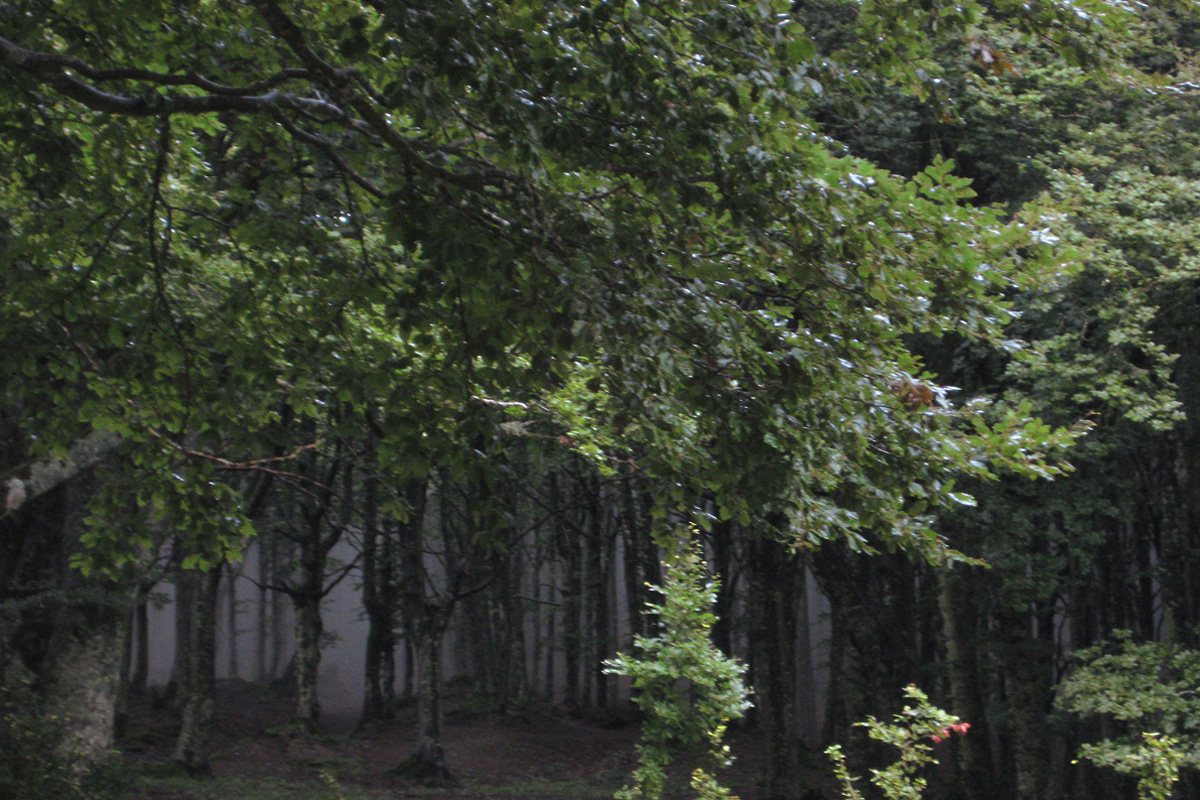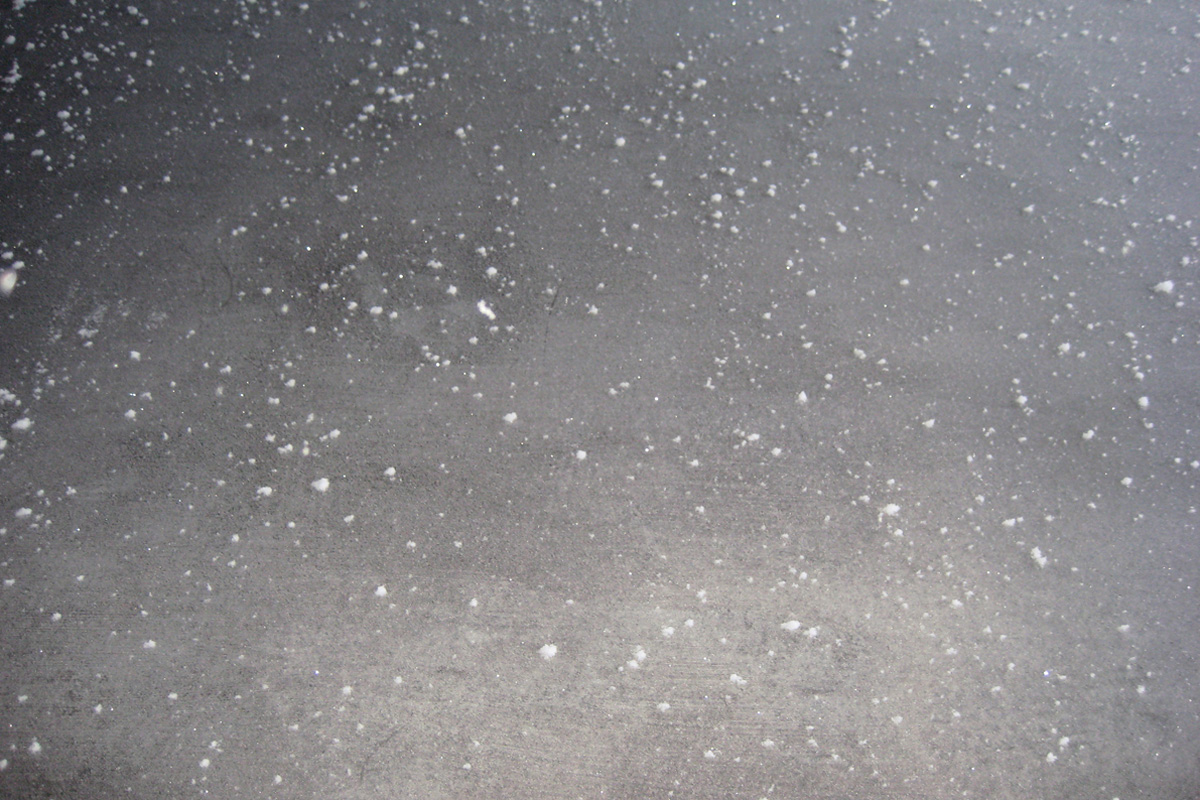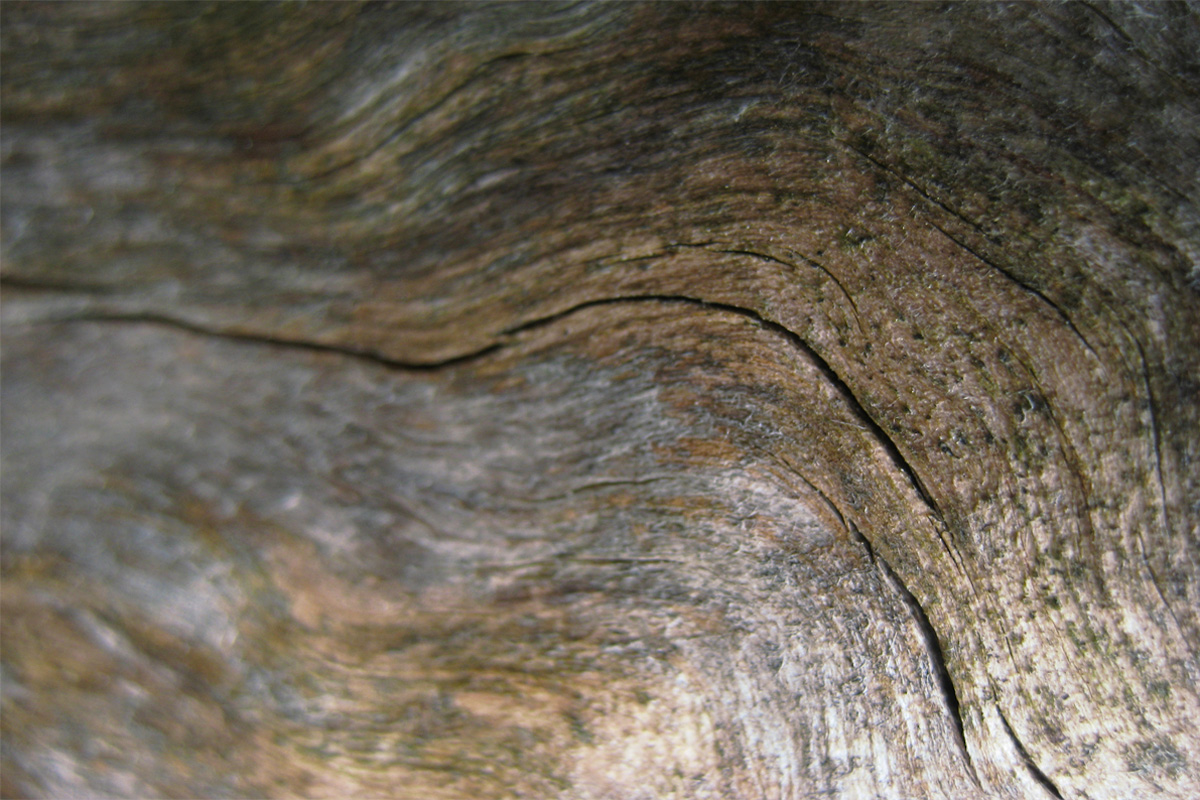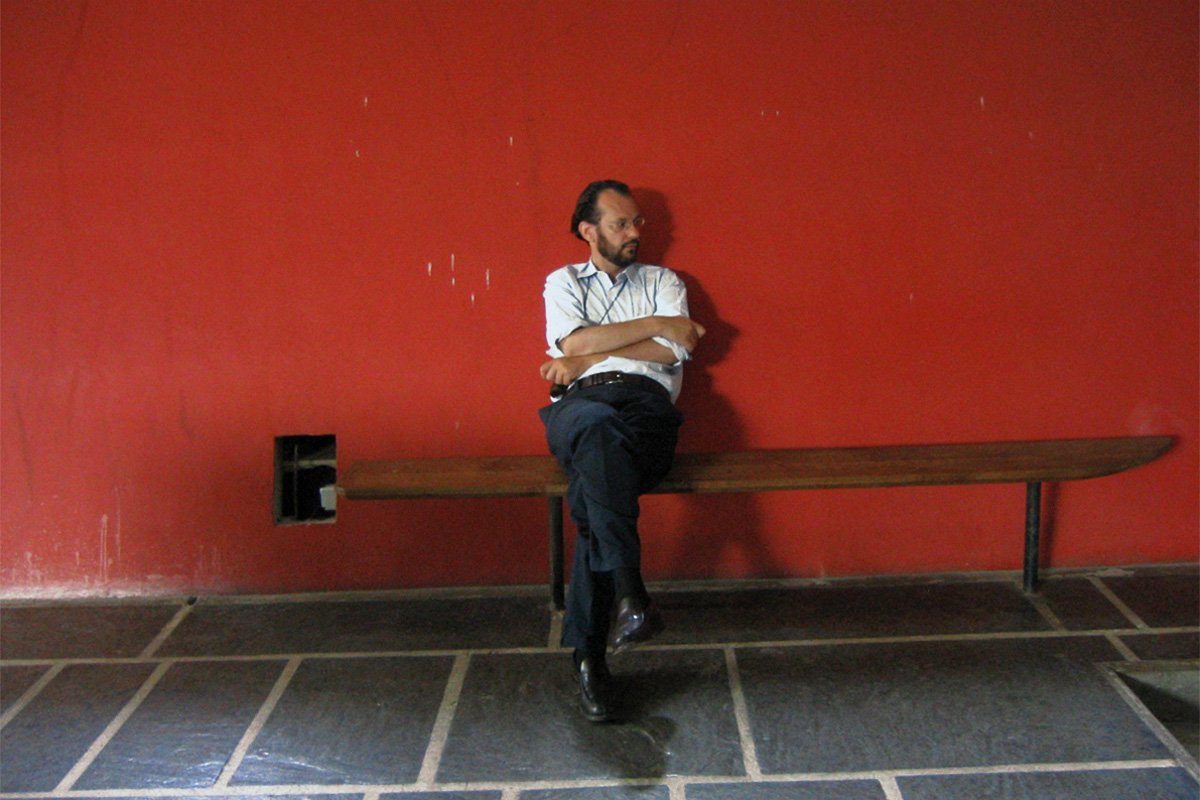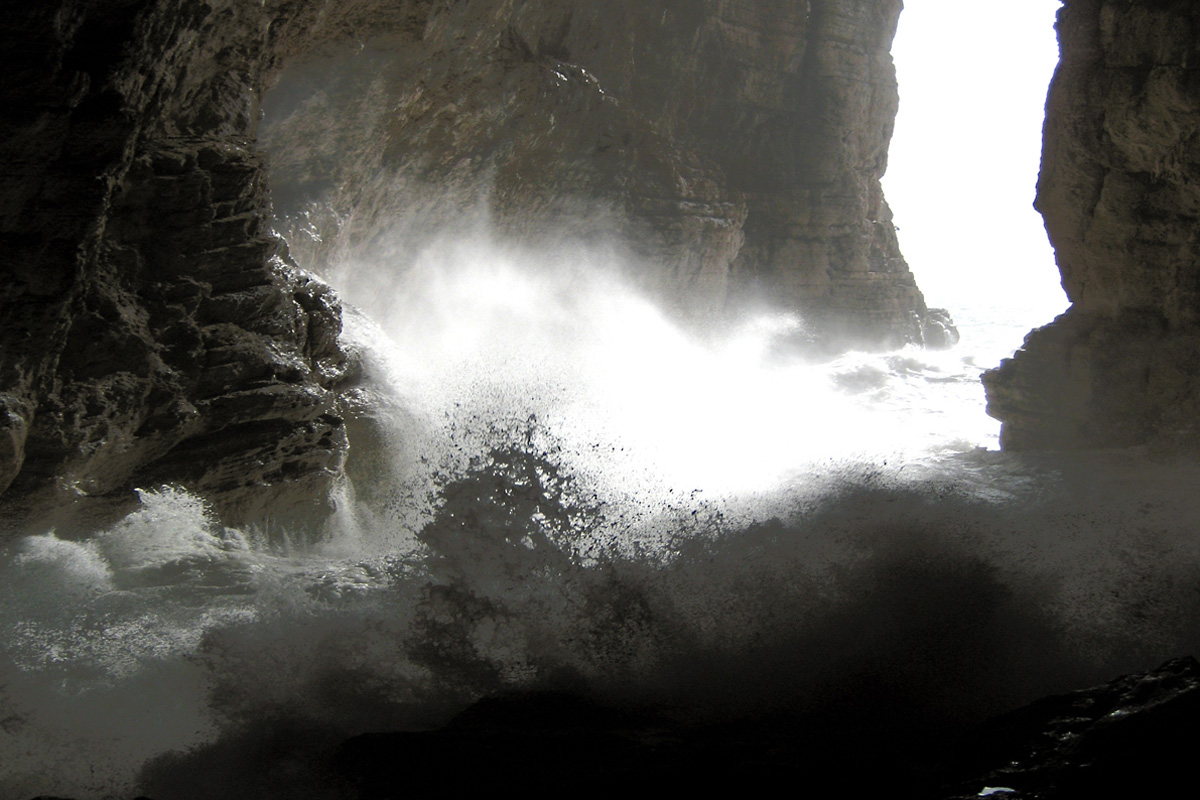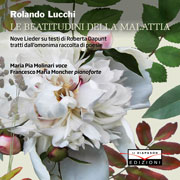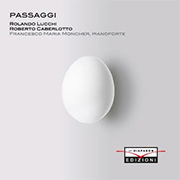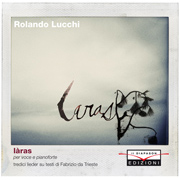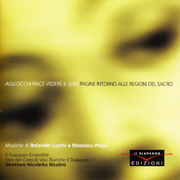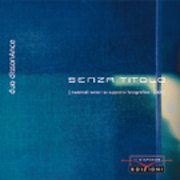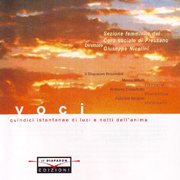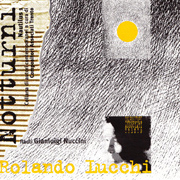His compositions, some of which have been commissioned by concert and cultural associations, musicians and festival committees, have been performed in concerts and on other special occasions in major Italian cities. They have been recorded on CD, broadcast on radio and published.
His compositions, some of which have been commissioned by concert and cultural associations, musicians and festival committees, have been performed in concerts and on other special occasions in major Italian cities. They have been recorded on CD, broadcast on radio and published.
| 1) | ...dunque; | For operatic mezzo-soprano, Bb clarinet and piano. | 1981 (rev. 1984) | 4' | |
| 2) | per Organo | Organ work | 1984 | 25' | |
| 3) | crucifixus | For narrator and percussionist. | 1984 | 25' | First performance: 30.11.199O. Centro Domus Jani. Illasi (VR). |
| 4) | poison perdu | For piano. | 1987 | 1' | |
| 5) | song for doll | For soprano voice and piano. | 1988 | 7' | |
| 6) | le figure | For four percussion instruments (xylophone, vibraphone, celeste and marimba). | 1988 | 11' | |
| 7) | stop and go | For French horn and piano. | 1989 | 6' | First performance: 30.11.199O. Centro Domus Jani. Illasi (VR). |
| 8) | break | For seven performers (piccolo, oboe, Bb clarinet, male or female voice, piano, percussion - five skins, double-bass or cello) | 1989 | 9' | |
| 9) | le morfematos | For baritone voice and piano | 1990 | 7' | First performance: 10.11.1990. Festival musica ‘9OO. Trento. |
| 10) | monotono | For string orchestra, two oboes and two horns | 1990 | 4' | |
| 11) | frammenti e commentari | For piano accordion. | 1991 | 6' | First performance: 17.11.1991. Festival musica ‘900. Trento. |
| 12) | le scelte amorose | For flute and harp. | 1991 | 13' | First performance: 17.11.1991. Festival musica ‘900. Trento. |
| 13) | i giardini d’infanzia | For piano (six hands). | 1992 | 4' | |
| 14) | dittico | For tape. | 1992 | 4' | |
| 15) | break in break | For piccolo, Bb clarinet and piano. Published by Rugginenti. | 1992 | 8' | First performance: 27.10.1993. Festival Trieste Prima Trieste. |
| 16) | tramontata è la luna | For piano, male or female voice, French horn and percussion. | 1992 | 13' | First performance (not public): 10.12.1992. In Giuseppe’s Le Chien Chant recital room. |
| 17) | notturni | For flute solo. | 1992 | 5' | First performance: 24.11.1992. AVIDAS DOLLAR Art Gallery. Milano. Recorded on Notturni Symposium CD. Collana Nautilus. 1997 |
| 18) | tanghi | For piano and two dancers. | 1992 | 3' | First performance: 27.04.1993. (Without dancers). II CHIOSTRO concert season. Milano. Recorded on Tango CD 2001 by Ema Records. |
| 19) | regalo di Natale | For soprano saxophone and piano | 1992 | 4' | First performance (not public): 10.12.1992. In Giuseppe’s Le Chien Chant recital room. |
| 20) | six memos for cello solo Foglio 1.5 |
For cello solo. | 1993 | 15' | First performance: 18.03.1994. "Quattro incontri con la musica del nostro tempo" Festival. Trieste. |
| 21) | six memos for cello solo Foglio 2.5 |
For cello solo. | 1994 | 10' | First performance: 17.05.1994. As part of our Poiesis in Palazzo Geremia in Trento |
| 22) | six memos for cello solo Foglio 3.5 (Liebeslied) |
For cello solo. | 1994 | 3' | |
| 23) | six memos for cello solo Foglio 4.5 (Langsamer Satz) |
For cello solo. | 1995 | 5' | |
| 24) | Six memos for cello solo Foglio 5.5 |
For cello solo. | 1995 | 9' | |
| 25) | `Im ´el | For organ. Published by Rugginenti, Milan. | 1995 | 7' | First performance: |
| 26) | lacrime | For violin solo. | 1996 | 20' | First performance: 6.11.1997 as part of the Musica ‘900 Festival |
| 27) | aira | Per flauto in sol (in G). | 1996 | 12' | First performance: |
| 28) | sabi e wabi | For celeste, two harps, two pianos and two percussionists. | 1996 | 5' | First performance: 9.12.1996 during the Musica ‘900 Festival (commissioned by the 1996 Trento Musica ‘900 Festival) |
| 29) | e la notte rischiarava la notte | For four flutes. | 1998 | 3' | |
| 30) | arrow-root in nove frammenti da nove canzoni popolari giapponesi |
For Bb clarinet. | 1998 | 5' | |
| 31) | ali | For piano, percussion and string orchestra. | 1999 | 5' | First performance: 3.07.1999 during the Pergine Spettacolo Aperto festival (commissioned by the 1999 Pergine Spettacolo Aperto festival) |
| 32) | hac | For string trio. | 1999 | 7' | First performance: 16.05.2000 in Trento as part of the Compositori d’oggi celebration. |
| 33) | soli | For piano accordion and piano. | 1999 | 5' | First performance: 8.04.2000 in Valmadrera (Lecco) as part of Mikrokosmos. Recorded on Tango CD 2001 by Ema Records. |
| 34) | agar | For five percussionists, elephant bells, singing bowls, Chinese temple bells, Chinese gong, Thai gong, and very deep gong. | 1999 | 5' | First performance: |
| 35) | aloë (a) | For vibraphone, xylophone, marimba, very large gong and piano accordion. | 2000 | 20' | First performance: 1.04.2001 in Villa Correr Pisani, Montebelluno during the 4th “Piano Accordion in Concert” festival |
| 36) | aloë (b) | For vibraphone, xylophone, marimba, very large gong and piano accordion. | 2000 | 20' | |
| 37) | aloë (c) | For vibraphone, xylophone, marimba, very large gong and piano accordion. | 2000 | 20' | |
| 38) | dolce è la luce | Sacred diptych for 8 unbroken voices, soprano saxophone, piano accordion, cello, an Eb tubular bell and three Thai gongs. | 2001 | 20' | First performance: 21.06.2001 at the Chiesa Cimiteriale di S. Agnese del dosso in Tres (TN) during the Tres Incontri d’Estate festival. Recorded on Agli occhi piace vedere il cielo. Pagine intorno alle regioni del sacro CD. Produced by: Il Diapason Edizioni. 2007 |
| 39) | haiku | For clarinet, piano accordion and cello. | 2002 | 5' | First performance: |
| 40) | sumens I | For clarinet, piano accordion and cello. | 2003 | 5' | First performance: 3.07.2004 at the Chiesa Cimiteriale di S. Agnese del dosso in Tres (TN) during the Tres Incontri d’Estate festival. Recorded on Voci. Quindici istantanee di luci e notti dell’anima CD. Produced by: Il Diapason Edizioni. 2003 |
| 41) | sumens II | For clarinet, piano accordion and cello. | 2003 | 3' | First performance: 3.07.2004 at the Chiesa Cimiteriale di S. Agnese del dosso in Tres (TN) during the Tres Incontri d’Estate festival. Recorded on Voci. Quindici istantanee di luci e notti dell’anima CD. Produced by: Il Diapason Edizioni. |
| 42) | sumens III | For piano accordion. | 2003 | 6' | First performance: 3.07.2004 at the Chiesa Cimiteriale di S. Agnese del dosso in Tres (TN) during the Tres Incontri d’Estate festival. |
| 43) | sumens IV | For clarinet and piano accordion. | 2003 | 4' | First performance: 3.07.2004 at the Chiesa Cimiteriale di S. Agnese del dosso in Tres (TN) during the Tres Incontri d’Estate festival. |
| 44) | sumens V | For clarinet and piano accordion. | 2003 | 5' | First performance: 3.07.2004 at the Chiesa Cimiteriale di S. Agnese del dosso in Tres (TN) during the Tres Incontri d’Estate festival. |
| 45) | sumens VI | For clarinet. | 2003 | 6' | First performance: 3.07.2004 at the Chiesa Cimiteriale di S. Agnese del dosso in Tres (TN) during the Tres Incontri d’Estate festival. |
| 46) | sumens VII | For clarinet, piano accordion, cello and tubular bell. | 2003 | 7' | First performance: 3.07.2004 at the Chiesa Cimiteriale di S. Agnese del dosso in Tres (TN) during the Tres Incontri d’Estate festival. |
| 47) | sumens VIII | For calrinet and cello. | 2003 | 4' | First performance: 3.07.2004 at the Chiesa Cimiteriale di S. Agnese del dosso in Tres (TN) during the Tres Incontri d’Estate festival. |
| 48) | sumens IX | For clarinet, piano accordion and cello. | 2003 | 5' | First performance: 3.07.2004 at the Chiesa Cimiteriale di S. Agnese del dosso in Tres (TN) during the Tres Incontri d’Estate festival. |
| 49) | sumens X | For piano accordion and cello. | 2003 | 6' | First performance: 3.07.2004 at the Chiesa Cimiteriale di S. Agnese del dosso in Tres (TN) during the Tres Incontri d’Estate festival. |
| 50) | sumens XI | For cello. | 2003 | 4' | First performance: 3.07.2004 at the Chiesa Cimiteriale di S. Agnese del dosso in Tres (TN) during the Tres Incontri d’Estate festival. |
| 51) | sumens XII | For clarinet. piano accordion and cello. | 2003 | 3' | First performance: 3.07.2004 at the Chiesa Cimiteriale di S. Agnese del dosso in Tres (TN) during the Tres Incontri d’Estate festival. |
| 52) | sumens XIII | For clarinet. piano accordion and cello. | 2003 | 5' | First performance: 3.07.2004 at the Chiesa Cimiteriale di S. Agnese del dosso in Tres (TN) during the Tres Incontri d’Estate festival. |
| 53) | arum | For brass quintet. | 2004 | 7' | |
| 54) | han? | For Bb trumpet. | 2005 | 5' | |
| 55) | halk | For two piano accordions. | 2005 | 5' | First performance: |
| 56) | halo | For guitar and piano accordion. | 2006 | 5' | First performance: |
| 57) | là, dove scivola la terra | Incidental music for the one-act play by Renzo Fracalossi and Andrea Zanotti. | 2008 | 20' | First performance: |
| 58) | fino all'ultimo giorno | Incidental music for the one-act play by Renzo Fracalossi. | 2009 | 20' | First performance: 27.01.2010 at the Teatro Sociale in Trento on the occasion of the Holocaust Remembrance Day. |
| 59) | notturni | For flute and piano. | 2010 | 15' | |
| 60) | làras | For voice and piano. Thirteen lieder on texts by Fabrizio da Trieste from the poetry book of the same name. | 2010 | 20' | Recorded on Làras CD. |
| 61) | nero | For piano. | 2011 | 5' | Recorded on Làras CD. Produced by: Il Diapason Edizioni 2011. |
| 62) | stella! | For children's choir and piano | 2011 | 5' | |
| 63) | nero | For two piano accordions and piano four hands | 2011 | 5' | |
| 64) | nero | For Clarinet ensemble | 2011 | 5' | |
| 65) | il piccolo principe | Incidental music for the show based on the novel by Antoine de Saint-Exupery
Directed by Rita Riboni Production Foundation AIDA -Verona | 2012 | 20' | |
| 66) | slow | For two piano accordions | 2012 | 5' | |
| 67) | snow | For piano solo | 2013 | 13' | |
| 68) | cinque tempi | For piano solo | 2016 | 15' | |
| 69) | the beatitudes of illness | For female voice and piano, nine Lieder on lyrics by Roberta Dapunt from the collection of poetry with the same name | 2017 | 20' | |
| 70) | four interludes | for piano and string orchestra | 2020 | 13' | |
| 71) | sette epitaffi e un altro ancora | For piano and reciting voice, based on texts by Roberta Dapunt from the poetry collection Sincope | 2021 | 13' |
From … dunque;, written in 1981 – notice the title’s ambiguous punctuation, which begins with a suspension and ends with a resolution that doesn’t seem to be conclusive – to nero written in 2011, the composer’s interest alternated between instrumental music, perhaps potentially the most creative area and more suited to his aesthetic spirit, and vocal music, which, although always being of a high standard, is inevitably restricted to the sense of the text; between ‘pure’ music, free of any external demands and linked only to the pleasure of writing (Stop and go, Break, Break in Break, Notturni, Six memos, sabi e wabi, aloë, etc.), and music dependent on other factors (I giardini d’infanzia, Là, dove scivola la terra, Fino all’ultimo giorno, Stella!, etc.). Despite this diversity in interest, Lucchi’s coherent writing makes all his compositions clearly recognisable and confirms a well-defined personal compositional style. If the ruins of post-Webernism, from the mirage of total serialism to the rejection of any reference to tonality, has characterised the whole second half of the twentieth century, people like Lucchi, who have experienced an end-of-age phase of reflection, have not hesitated to adopt a more ‘human’ approach to music and, while maintaining a strong forward-looking inclination, have managed to unite this with a vision of music that neither denies its past nor hides from its present.
In the 1980’s, when the respected but certainly not very popular radical avant guarde had entered a blind alley, a period which coincides with the official start of Lucchi’s compositional activity, it was acknowledged that linear narration, the absolute certainty of meaning (by now associated only with styles that were already in the repertoire) and of experimentation for its own sake, were disappearing. Experimentation for its own sake was often done in good faith, but the resulting compositions were unable to communicate because of always having to establish themselves and redefine their semantic and cultural contexts, from which to draw energy to be sustained.
Analysing the historical context and looking for a convenient label, everything could be summarised with the term ‘post-modern’, although it is obviously inadequate in rendering all the particularities involved. However, the elements of polystylism, the use of pre-existent materials and techniques, and the mixing and matching combination game with which the sounds are organised and put together can only indicate a return to an aesthetic stance of ‘pleasantness’, completely in contrast with the non-acceptance of anything to do with consonance, which is typical of the ‘modern’ period in music. Being careful of inevitable implied meanings in the use of any terminology, it is not inappropriate to examine certain pieces, such as Break, Stop and Go, Break in Break, perhaps the most important in Lucchi’s entire output in forging his personal style, and identify the elements of that systematic interchangeability that make his musical language so clearly defined. Such elements appear insistently, almost becoming a true and proper idée fixe, and these characterise a large part of Lucchi’s compositional technique: the combinational games are amalgamated and come up again and again in an eternal cycle; thus, from being simple organisational strategies to be developed within a piece, they become true and proper cycles (Notturni, Six Memos, aloë, sumens), an expression of continual recombination that transcends even the experience of writing and listening and expands to infinity.
Even in the more “narrative” pieces, dolce è la luce, Tanghi, etc., the discourse is continued in a personal way, from time to time manifesting itself with an ironic glance or with clear spiritual references, almost as if rejecting that so-much sought-after expressive personality that every artist often vainly desires, leaving, instead, listeners free to construct or interpret according to their own capabilities in an atmosphere of mutual respect, in which the artist figure is no longer sacred, even though his personality remains and continues to play the vital role of spiritual, ethical and aesthetic guide.
Everything expressed by Rolando Lucchi, in fact, even amidst the multitude of interests and activities that make him stand out, assumes a hint of extraneousness from human needs, of elevation above purely aesthetic objectives, without ever losing sight of a world, like the one around us, which is strongly attached to standardized values, objectives and functions.
Marco Russo, April 2012
portrait_Piero Cavagna
red background portrait_Laura Marcolini
development and animation_EvoStudios
graphic design_Diadestudio.it






